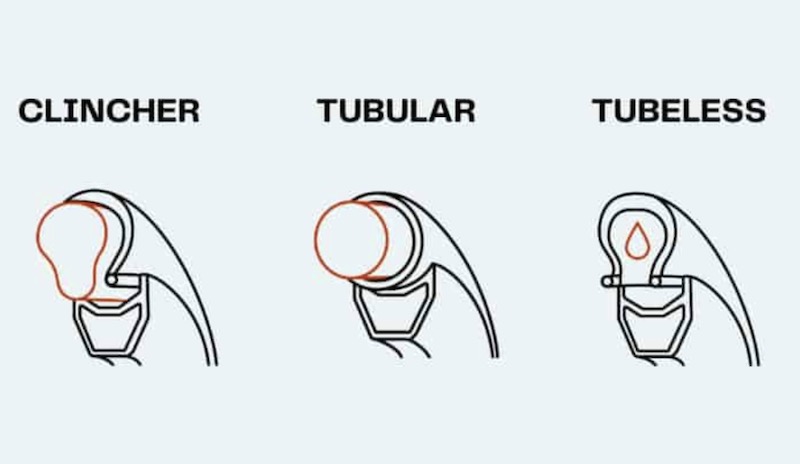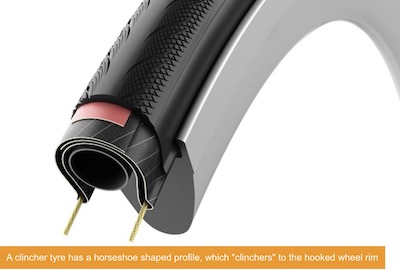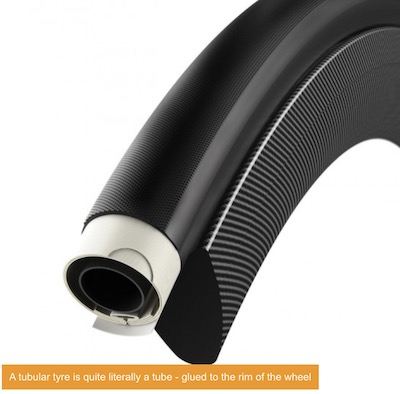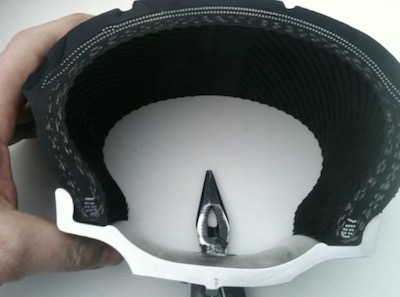Categories
New Blog
Tags

Choosing the right tire is very difficult, and even racers struggle to choose the perfect tread for race day.Because we cannot control the cyclocross race dry, grassy and corner-heavy, sand-blown, snowy, and muddy as hell. Furthermore,there are hundreds of tire options and combinations available.
Setting up your bicycle may not be as easy as you expect, particularly when choosing the tire that will fit your needs. Among clincher vs tubular vs tubeless tires, perhaps you found yourself thinking about what tire option you should pick out. This article will help you to know about each tire type – Tubulars, Tubeless & Clinchers!
1. Clincher Tires

A clincher tire comprises a wheel connected to a bead through a clincher rim.Commonly regarded as the standard tire in most bike models, this tire is relatively easy to repair or replace with a new tube.The meaning behind the clincher tire definition alludes to its “clinch” placement onto the wheel rim with a firm rubber bead.
2.Tubular Tires

Tubular tires resemble clinchers with reduced weight, often regarded as the touchstone for competitive hardcore and professional bike riders.Tubulars, meanwhile, describe a tube sewn directly to a tire. Such a feature earned its tags such as sew-up in the US, tub in Britain, and single in Australia.
With their lighter features, riding with tubular tires will surely be bliss. However, flat repair for a road bike with tubular wheels is a bit trickier than a clincher tire bicycle.
3. Tubeless Tires

A considerably new setup that is gaining traction among cyclists in road and bike racing, its airtight arrangement allows lower air pressure, providing better rolling resistance on smooth and rough surfaces.Tubeless refers to tires with a similar clinching attachment but no-inner tube mechanism.This is where the tyre and rim create the sealed volume for the air. Essentially the same as a tubed setup but without the tube. Most common on road bikes and big adventure bikes.
4,Cost
Tubulars cost more than clinchers, and tubeless tires are priced the highest among all three variations.
5,Clincher tires Pros&Cons
Pros
Clinchers are tried and tested. They have been around for decades and are relatively easy to repair if you get a flat tire. All you need is a mini-pump and a patch kit for most punctures. Large punctures might require you to replace the inner tube. It is a relatively straightforward process. These tires tend to be cheaper and can be found at virtually every bike shop. They are the most common type of tire at the moment. A wide variety of inner tubes are available. They are either made of butyl or latex. All of Elitewheels’ carbon road wheels support clincher tires.
Cons
While clincher tires have many merits, they do come with a few drawbacks. They are more prone to flats as compared to tubeless tires as they cannot automatically seal small punctures with the help of sealant. In the case of rim brakes carbon rims, one is using a rim with a carbon braking surface, they can be more prone to flats with improper braking technique while descending, especially in hot weather. This, however, is a non-issue if you are using disc brakes, as disc brakes do not brake against the carbon rim.
6,Tubeless tires Pros&Cons
Pros
One of the most attractive benefits to tubeless tires is the fact that they have the ability to automatically fix punctures when out riding. This can give riders extra assurance and make the ride a little safer and straightforward if a flat were to occur. Tubeless tires can also be run at lower pressures, making the ride more comfortable.
Cons
Use of tubeless tires has many benefits, though depending on the tubeless wheels and tires you are using, it can be difficult to inflate using a floor pump alone. There is a technique to inflating a tubeless tire, and in some cases there is a learning curve. In situations when a floor pump is insufficient, an air compressor might be necessary. In some situations, it is possible that there could be a mess with sealant. When out riding, it is still recommended that riders take a spare tube and tire levers just in case there is a flat. Tubeless tires with sealant can fix most punctures, but not all.
7,Tubular Tires Pros&Cons
Pros
Tubular tires have a few significant benefits. The first is that when they are paired with tubular wheels, the system can be made lighter than their tubeless and clincher counterparts. Hundreds of grams can be saved from the total weight of a bike. The is important for professional cyclists, as their bikes can get closer to the UCI’s 6.8kg limit. The other advantage is that they do not suffer the same blowout issues that can occur on some rims due to overheating. In the event of a flat, it is essentially impossible for the tire to go off the bike rims.
Cons
Just like the other two types of tires discussed, tubular tires do have their drawbacks. They tend to be the most expensive and the most difficult to find at a bike shop. Many do not carry them. Contrary to popular belief, in some cases, they can be filled with sealant giving them more puncture resistance, but in many cases it is not possible. The tires can be more difficult to install, but due to the advent of tubular tape, it is much easier than before.
Xiamen Tour de Cycling Industry&Trade Co.,Ltd. is located in XIAMEN city and has 15 years experience to produce carbon bike frames, carbon rims etc. please contact us for quotation!